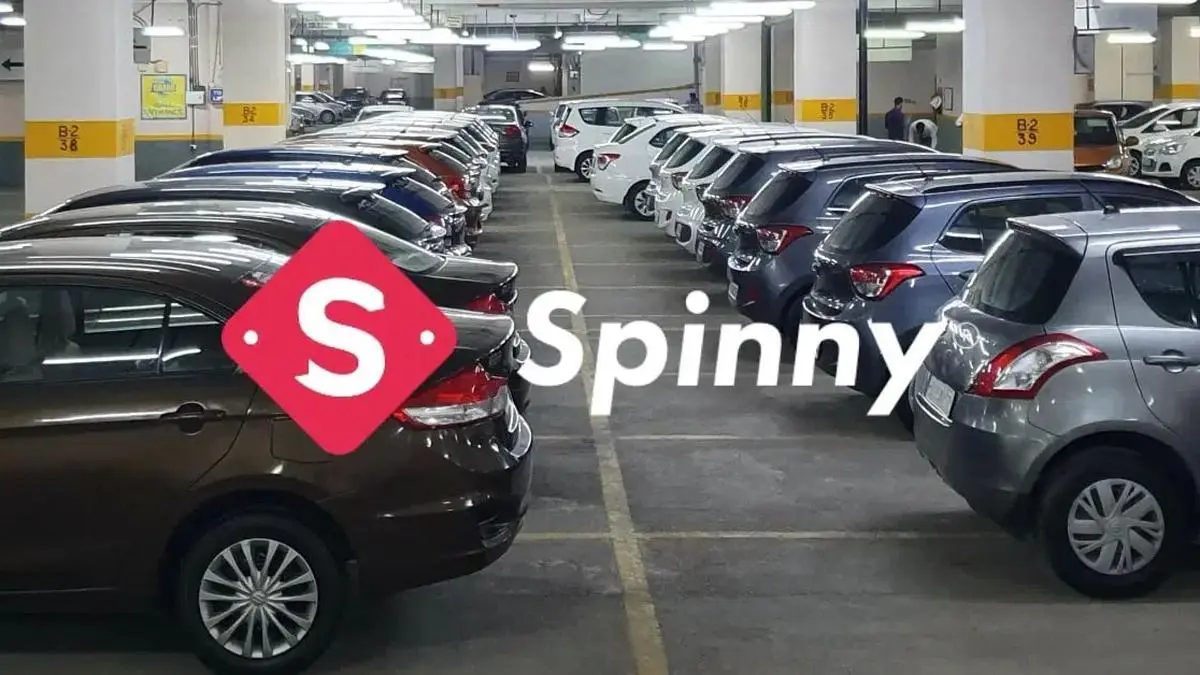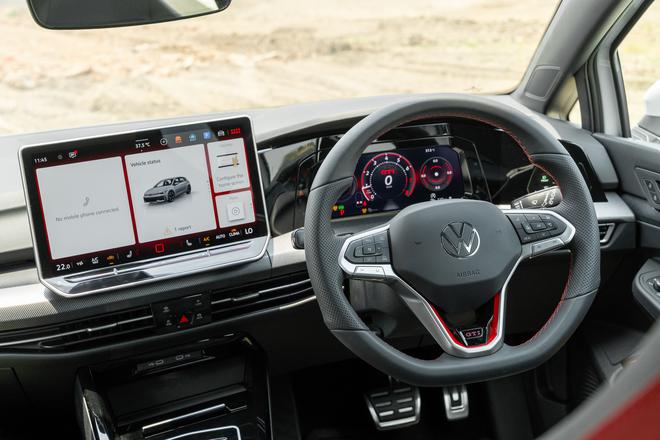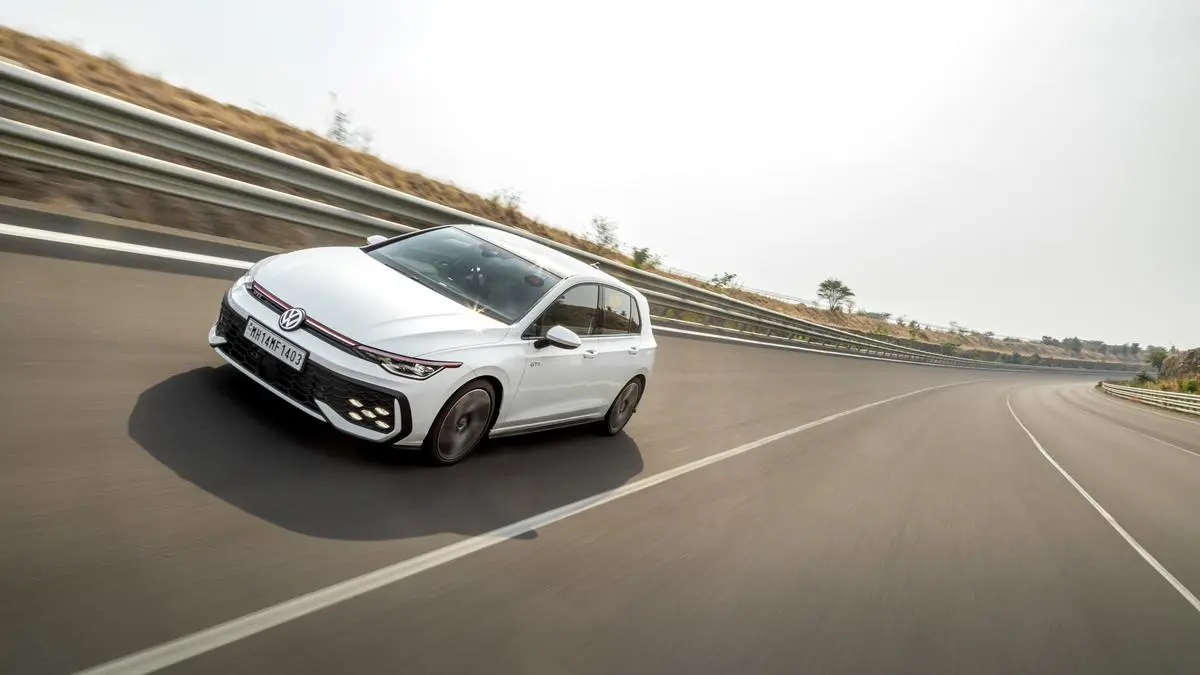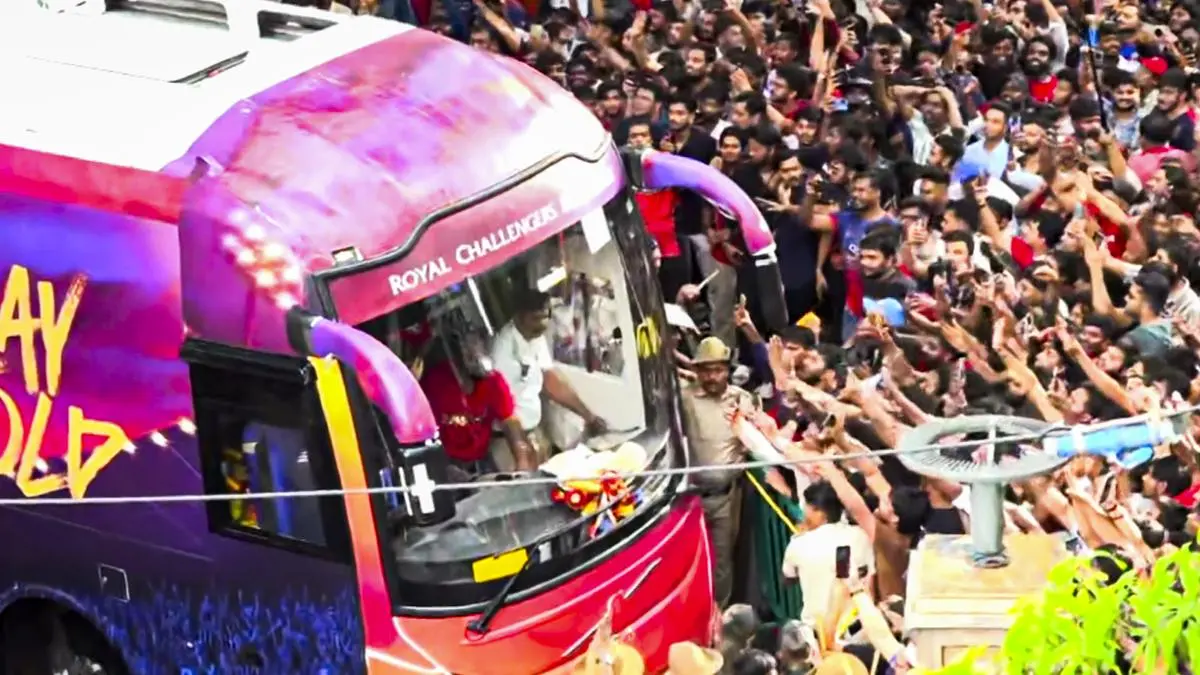Business
Spinny raises $131 million in Accel-led round amid booming used-car market
Fresh Funding Fuels Spinny’s Growth in the Thriving Pre-Owned Car Sector Used-car marketplace Spinny has raised 1 million in a funding round led by Accel Leaders Fund, according to news reports. This fundraising comes at a time when the used-car market, which recorded 4.6 million sales in 2023, is projected to reach 10.8 million by […]

Fresh Funding Fuels Spinny’s Growth in the Thriving Pre-Owned Car Sector
 Used-car marketplace Spinny has raised 1 million in a funding round led by Accel Leaders Fund, according to news reports. This fundraising comes at a time when the used-car market, which recorded 4.6 million sales in 2023, is projected to reach 10.8 million by 2030, growing at a compound annual rate of 13 per cent, according to a CARS24 report.
Used-car marketplace Spinny has raised 1 million in a funding round led by Accel Leaders Fund, according to news reports. This fundraising comes at a time when the used-car market, which recorded 4.6 million sales in 2023, is projected to reach 10.8 million by 2030, growing at a compound annual rate of 13 per cent, according to a CARS24 report.
The expansion is driven by rising demand across both urban centres and smaller townsThe fundraising comes amid increased activity in the used-car marketplace, following Droom’s recent million funding round, which, according to reports, was co-led by India Accelerator and Finvolve, as the company prepares for an IPO.
Founded in 2015, the online used-marketplace, the company previously raised 8 million in its Series D funding round in 2021 from new and existing investors, led by Tiger Global. Another new investor in the round is New York-based Avenir Growth.
Business
TCS, Infosys, Wipro, HCLTech: Why the IT stocks’ correction gathers no moss

Published on June 7, 2025
It’s all relative
Following this, investors would be tempted to think ‘is the correction over?’ While there has been a severe timewise correction in stocks, unfortunately by one metric they are in their most expensive zone in the last 10 years! This may continue to weigh on shareholder returns.Companies to followNot just TCS, but for its major contemporaries as well — Infosys, Wipro and HCLTech — the period FY24-27 will rank amongst their worst three-year period in terms of growth. In this context, with bond yields globally on the rise and providing attractive yields, it might make FPIs look past these stocks.

The charts compare the bond-equity yield spread for the IT stocks from the perspective of a foreign investor, which is the stock’s earnings yield minus the US 10-year bond yield, for the last 10 years. By this measure although stock valuations (barring HCLTech) have corrected significantly from highs, the irony is that on a relative basis they are hovering around their most expensive levels in the last 10 years.
Hunger for growth
Take TCS – its PE today is bang where it was 10 years back, yet when compared to other investible options from an FPI perspective it is unattractive versus 10 years back. Not only this, equally on the unfavourable side is its growth prospects today. In FY2015, TCS delivered constant currency (CC) revenue growth of 17 per cent — that alone on its own sufficiently justified a 25x PE, leaving apart the attractive bond-equity yield spread. To the contrary, its CC revenue growth in FY25 was just 4.2 per cent.The period since GFC triggered the phase of global investor’s hunger for yields as interest rates in developed markets dropped to near zero or even negative levels. Compared to a 10-year government bonds yielding 0 to 2 per cent, even stocks with PE of 30 times or earnings yield (1/PE) of 3.3 per cent (generally viewed expensive in the pre GFC era) suddenly appeared attractive. As long as the earnings yield was above the government bond yield, and it also came with decent and consistent earnings growth, such stocks found strong favour. IT stocks neatly fitted into this spot.As compared to hunger for yields in the era of low interest rates, global investors are now hungry for growth. High payout ratios — like those seen in IT majors that distribute most of their profits to shareholders instead of reinvesting for growth in new businesses — worked well earlier, but may now put pressure on these companies.Investors will be willing to buy stocks/indices with low or negative bond-equity yield spread if the growth prospects are bright, but currently that is missing for IT majors.


Following this, investors would be tempted to think ‘is the correction over?’ While there has been a severe timewise correction in stocks, unfortunately by one metric they are in their most expensive zone in the last 10 years! This may continue to weigh on shareholder returns.
It’s all relative
As their core IT services business faces competition from GCCs, mid-cap IT players and, more importantly, AI-related disruption, growth may remain lacklustre. Slow growth for three consecutive years may also reflect structural changes beyond cyclical factors.Published on June 7, 2025 Take TCS – its PE today is bang where it was 10 years back, yet when compared to other investible options from an FPI perspective it is unattractive versus 10 years back. Not only this, equally on the unfavourable side is its growth prospects today. In FY2015, TCS delivered constant currency (CC) revenue growth of 17 per cent — that alone on its own sufficiently justified a 25x PE, leaving apart the attractive bond-equity yield spread. To the contrary, its CC revenue growth in FY25 was just 4.2 per cent.

Companies to follow
Hunger for growth
As compared to hunger for yields in the era of low interest rates, global investors are now hungry for growth. High payout ratios — like those seen in IT majors that distribute most of their profits to shareholders instead of reinvesting for growth in new businesses — worked well earlier, but may now put pressure on these companies.The period since GFC triggered the phase of global investor’s hunger for yields as interest rates in developed markets dropped to near zero or even negative levels. Compared to a 10-year government bonds yielding 0 to 2 per cent, even stocks with PE of 30 times or earnings yield (1/PE) of 3.3 per cent (generally viewed expensive in the pre GFC era) suddenly appeared attractive. As long as the earnings yield was above the government bond yield, and it also came with decent and consistent earnings growth, such stocks found strong favour. IT stocks neatly fitted into this spot.Investors will be willing to buy stocks/indices with low or negative bond-equity yield spread if the growth prospects are bright, but currently that is missing for IT majors.With the Nifty 50 scaling 25,000 on Friday and continuing its journey of recouping lost ground from its September 2024 peak, investors in major IT stocks continue to watch from behind. In the last three years, every time the stocks of IT majors — TCS, Infosys, Wipro — have risen, they have done so only to fall again such that their returns are largely flat in this period while the Nifty has zoomed 50 per cent.
Business
Volkswagen Golf GTI: Redemption

You won’t be bothered about any of that the moment you set out for your drive. We had access to the NATRAX test centre near Indore for this drive — including the 11.3 km high-speed circuit — and the GTI showed its true colours. The car epitomises flexibility; you can hoon it around a racetrack, and, without making any mechanical changes, drive it to work like nothing happened, and the car will quite obediently follow your lead. The sleek exterior design draws your attention quickly and is also well-proportioned, but not without great hints of aggression, making the car’s purpose quite evident. There are four exterior colours to choose from, its 18-inch alloy wheels are standard, and there’s no dearth of ‘GTI’ badges. An illuminated strip joins the two headlights, making the Golf GTI ever so slightly more dramatic when it gets dark outside. This is further complemented by an illuminated VW logo, while the trademark red strip across the front, the five-pod fog lights, and the fang-like elements on the lower grille work in tandem to ensure that the GTI’s is a face you wouldn’t forget.
The 12.9-inch touchscreen is the centerpiece — more than just a big display, it’s smartly integrated for enhanced functionality
| Photo Credit: Kaizad Adil Darukhanawala
 Start the car in sport mode, and the exhaust has a mild rumble (which isn’t too intrusive), but as revs climb, the engine noise becomes more characterful, and it even emits pops without needing a ‘pops and bangs’ tune from your friendly tuner. The chassis, too, is remarkable, again signifying the Golf GTI’s flexibility. It doesn’t get adaptive dampers, but despite that, the ride is comfortable. In the handling department, the Golf scores quite well. Its nose is eager to follow your steering input although the steering itself feels a bit numb. You can fully deactivate the car’s stability control, but I found that ESC Sport allowed me to push the car without intervening. My only gripe is that while the automatic gearbox is quick to shift, both by itself or when you operate it using the paddle shifters, a car like this deserves to be specced with a manual gearbox.
Start the car in sport mode, and the exhaust has a mild rumble (which isn’t too intrusive), but as revs climb, the engine noise becomes more characterful, and it even emits pops without needing a ‘pops and bangs’ tune from your friendly tuner. The chassis, too, is remarkable, again signifying the Golf GTI’s flexibility. It doesn’t get adaptive dampers, but despite that, the ride is comfortable. In the handling department, the Golf scores quite well. Its nose is eager to follow your steering input although the steering itself feels a bit numb. You can fully deactivate the car’s stability control, but I found that ESC Sport allowed me to push the car without intervening. My only gripe is that while the automatic gearbox is quick to shift, both by itself or when you operate it using the paddle shifters, a car like this deserves to be specced with a manual gearbox. Balanced dynamics
© Motoring WorldNearly a decade ago, Volkswagen India did the unthinkable. It brought to our market a car that seemed impractical, had fewer doors, and was about four times as expensive as the one it was based on. Despite that, it found many takers, quickly helping it attain a legendary status — so much so that used examples show nearly no signs of depreciation, even a decade later. That was the Volkswagen Polo GTI, and now, nine years later, Volkswagen has brought out another GTI; this time, a more powerful and definitely more focussed one. It is the Mk 8.5 Golf GTI, a front-wheel drive hatchback whose badge is considered synonymous with ‘hot hatch’. We take it out for a drive to understand what the fuss is aboutPublished on June 6, 2025 I’ve always adored the Golf GTI, and I’m certain there are many out there who share the same sentiment. Priced at ₹53 lakh, ex-showroom, the Golf GTI isn’t going to be within everyone’s reach, but you know what, if you’ve wanted one badly (and have the means), you would have booked it already. The first lot of 150 cars coming to India is sold out already, which proves my point.

Sleek design
© Motoring World
The 12.9-inch touchscreen is the centerpiece — more than just a big display, it’s smartly integrated for enhanced functionality
| Photo Credit: Kaizad Adil Darukhanawala

I’ve always adored the Golf GTI, and I’m certain there are many out there who share the same sentiment. Priced at ₹53 lakh, ex-showroom, the Golf GTI isn’t going to be within everyone’s reach, but you know what, if you’ve wanted one badly (and have the means), you would have booked it already. The first lot of 150 cars coming to India is sold out already, which proves my point.
Balanced dynamics
There’s no doubt that Volkswagen has been at the top of its hot hatchback game, and we’re pleased to report that the Golf GTI is unchanged for the Indian market. It’s powered by the EA888 2-litre turbocharged petrol engine, which makes 261 bhp and 37.7 kg-m. It powers the front wheels via a 7-speed dual-clutch automatic gearbox and an electronically controlled limited-slip diff. The sleek exterior design draws your attention quickly and is also well-proportioned, but not without great hints of aggression, making the car’s purpose quite evident. There are four exterior colours to choose from, its 18-inch alloy wheels are standard, and there’s no dearth of ‘GTI’ badges. An illuminated strip joins the two headlights, making the Golf GTI ever so slightly more dramatic when it gets dark outside. This is further complemented by an illuminated VW logo, while the trademark red strip across the front, the five-pod fog lights, and the fang-like elements on the lower grille work in tandem to ensure that the GTI’s is a face you wouldn’t forget. Start the car in sport mode, and the exhaust has a mild rumble (which isn’t too intrusive), but as revs climb, the engine noise becomes more characterful, and it even emits pops without needing a ‘pops and bangs’ tune from your friendly tuner. The chassis, too, is remarkable, again signifying the Golf GTI’s flexibility. It doesn’t get adaptive dampers, but despite that, the ride is comfortable. In the handling department, the Golf scores quite well. Its nose is eager to follow your steering input although the steering itself feels a bit numb. You can fully deactivate the car’s stability control, but I found that ESC Sport allowed me to push the car without intervening. My only gripe is that while the automatic gearbox is quick to shift, both by itself or when you operate it using the paddle shifters, a car like this deserves to be specced with a manual gearbox. You won’t be bothered about any of that the moment you set out for your drive. We had access to the NATRAX test centre near Indore for this drive — including the 11.3 km high-speed circuit — and the GTI showed its true colours. The car epitomises flexibility; you can hoon it around a racetrack, and, without making any mechanical changes, drive it to work like nothing happened, and the car will quite obediently follow your lead.
Business
Bengaluru RCB stampede fallout: Govt suspends top cops, orders CID probe

Published on June 5, 2025 A Magisterial inquiry has been initiated, with the Deputy Commissioner of Bengaluru Urban District appointed as the inquiry officer, and the report is expected within 15 days, according to Chief Minister Siddaramaiah, who posted the update on X. As per the order issued yesterday, the Cabinet discussed the matter after preliminary details of the tragedy emerged, and the investigation against the three organisations involved has been handed over to the CID.Earlier today, the BJP criticised the state government and demanded the resignation of Chief Minister Siddaramaiah and Deputy CM D.K. Shivakumar. Karnataka BJP President B.Y. Vijayendra called the celebration “inhumane” and held the state government fully responsible for the tragedy. “The lack of anticipation for lakhs of people is an admission of failure on their part. The CM tried to escape accountability by saying the stampede only occurred at Chinnaswamy Stadium,” he said.Meanwhile, RCB announced a compensation of ₹10 lakh each for the families of the deceased on Thursday. The franchise also set up a fund called ‘RCB Cares’ to support fans injured in the incident. The Karnataka government had already announced ₹10 lakh compensation and committed to bearing the full medical expenses of those injured.Speaking to the media at a press conference after the emergency Cabinet meeting on Thursday, Chief Minister Siddaramaiah said that a one-member commission has been constituted under the leadership of retired High Court judge Justice Michael Cunha. Legal action has also been initiated against representatives of three entities—RCB, event organisers DNA, and the Karnataka State Cricket Association (KSCA). An FIR has been registered, and directions have been issued to arrest those responsible.The government has suspended the Police Inspector of Cubbon Park Police Station, the Assistant Commissioner of Police (ACP) of the area, the Central Deputy Commissioner of Police (DCP), the Additional Police Commissioner in charge of the stadium, and the Bengaluru City Police Commissioner, with immediate effect.


The government has suspended the Police Inspector of Cubbon Park Police Station, the Assistant Commissioner of Police (ACP) of the area, the Central Deputy Commissioner of Police (DCP), the Additional Police Commissioner in charge of the stadium, and the Bengaluru City Police Commissioner, with immediate effect.
-

 india2 years ago
india2 years ago“Major Crash of Sukhoi Su-30 and Mirage 2000 Fighter Jets in Madhya Pradesh”
-

 Sports2 years ago
Sports2 years agoWFI meetings on April 16, elections likely to be discussed
-

 india1 year ago
india1 year agoPM Modi Meets Deve Gowda for Seat Sharing Talks
-

 india1 year ago
india1 year agoBengaluru: False threat to bomb Raj Bhavan
-

 india2 years ago
india2 years ago“AIMIM to Contest 50 Seats in Upcoming Telangana Assembly Elections”
-

 Entertainment1 year ago
Entertainment1 year agoAnant Ambani: Controversy at the Ambani Pre-Wedding Bash
-

 Karnataka2 years ago
Karnataka2 years agoWomen have to show their Aadhaar to travel free on KSRTC bus
-

 Entertainment2 years ago
Entertainment2 years agoRajinikanth is Moideen Bhai in ‘Lal Salaam’










